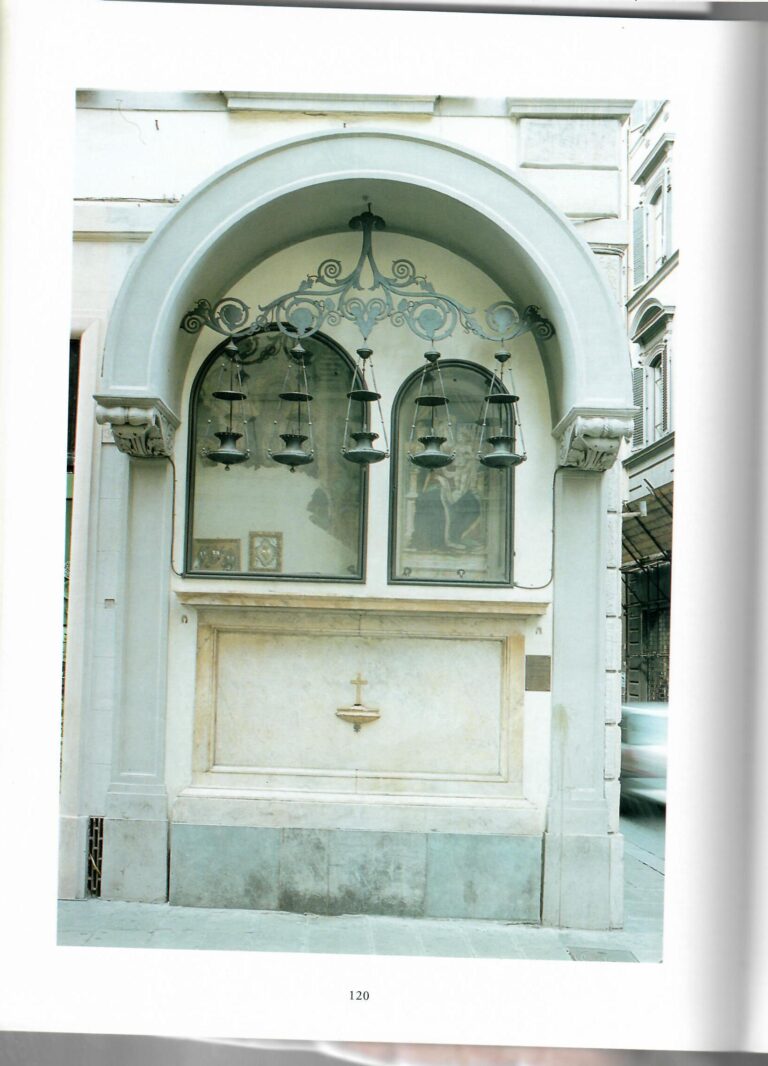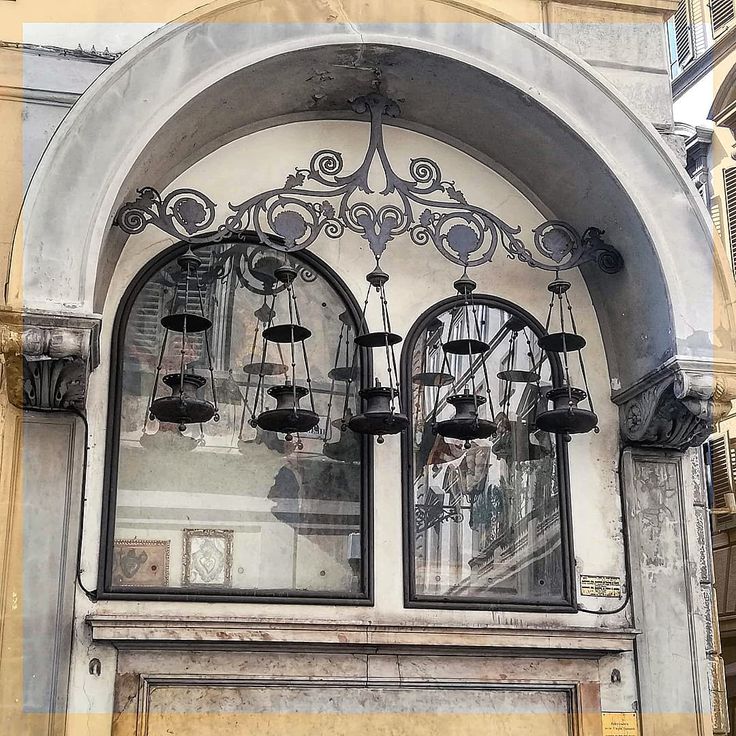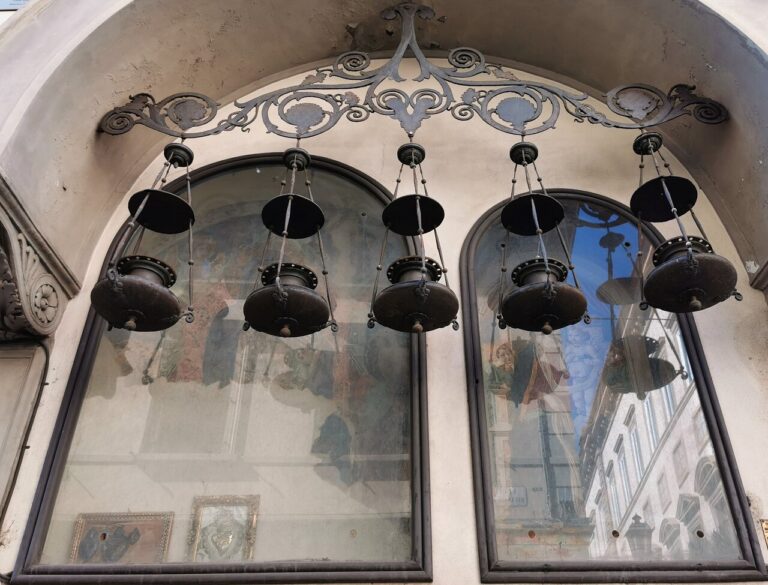Tabernacles of Florence
Via Ricasoli corner of Via dei Pucci
THE TABERNACLE
Madonna col Bambino
The fresco depicts the Madonna seated on a marble throne with a semicircular back, with a sphere decorating its two ends. The Child - dressed in a pleated tunic that covers him just below the navel, while the Virgin's long veil passing in front of him then falls back to the right - is shown blessing with the usual little bird, tightly held in the other hand. Two teenage-curly-haired-pensive angels are leaning on the throne’s arms, which rests on marbled marble steps. Painted in the gauges are the two most representative saints of the city: on the right San Zanobi, with mitre and crosier, his cope open on the surplice, stopped by the button on which the Florentine lily stands out; on the left, the wispy Giovanni Battista, in red mantle and holding a reed cross, his face lean and scorched, shaved. Both saints’ gazes are turned outward.
Tabernacle
A round arch, resting on two scroll brackets, protects one of the city's most famous tabernacles, popularly known as the “tabernacolo delle Cinque Lampade” (the “Tabernacle of the Five Lamps”). Under the sill, a marble slab contains a slot for offerings that were meant to keep the five lamps supplied with oil. It is inserted into a small yellow marble box shaped like an urn and surmounted by a small cross of the same material. This slab is then concluded downward by a marble plinth.
THE STREET
VIA RICASOLI
The street is dedicated to the Ricasoli family; in particular, here we find the Bettino Ricasoli’s palace, an important 19th-century Florentine politician. In ancient times, at least until 1847, the street was called “del Cocomero”, and the old Teatro Niccolini, at the beginning of the street towards Piazza del Duomo, was called “Teatro del Cocomero”.
AUTHOR
Cosimo Rosselli
(Florence 1439-1507) He was born in Florence from Lorenzo di Filippo Rosselli and his second wife, Tommasa di Giovanni da Monteficalle. He was a pupil of Neri di Bicci from May 1453 to October 1456, then went on to follow Alesso Baldovinetti. In 1459 he received his first major commission for an altarpiece, now lost, for the Florentine church of Santa Trinità.
The artist
(Florence 1439-1507) He was one of the painters of the Cappella Sistina, a graceful illustrator. He later approached the manner of Andrea del Verrocchio. In the last decades of his life, following the new instances brought by Girolamo Savonarola whose follower he was, his painting style became more rigorous, becoming charged with a dry and pathetic devotionality. The incisive sign and stark colors were two distinctive features of his style. He died on January 7, 1507, and was buried in Santissima Annunziata, Florence.
Curiosity
In the left niche, a fresco larva was preserved before the restoration and its faint figurative traces revealed it to be a 14th-century work, presumably already worn away in the lower part before the 19th-century rearrangement of the tabernacle; it was revealed by a 17th-century work of rearrangement of the house’s wall owned by the Pecori family.
OTHER INFORMATION
Info
AMICI DEI MUSEI FIORENTINI ODV - COMITATO PER IL DECORO E IL RESTAURO DEI TABERNACOLI - Card by Bruno Santi - Restorer: Daniela Dini (1999) - Work direction: Simonetta Bracciali - High supervision: Licia Bertani, Monica Bietti, Fiorella Facchinetti, Litta Medri - Funding: Silvana Gamberini Venè - in memory of Italo Gamberini
PICTURES

Tabernacle
Via Ricasoli corner of Via de' Pucci

Tabernacle
Via Ricasoli corner of Via de' Pucci

Detail: Lamps
Via Ricasoli corner of Via de' Pucci
